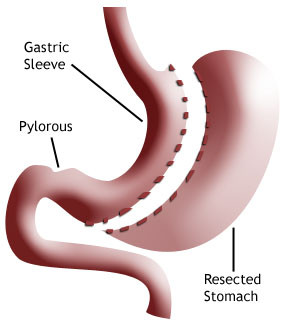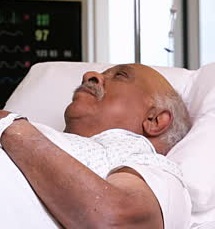Atrial Septal Defect is heart defect, which is referred as congenital heart defect. The defect is the indication of the blood that is flowing in between atria, the upper chambers of the heart. The interatrial septum is a wall in between the atria, dividing both. If this septum or wall is not present or defective, oxygenated blood gets mixed with poor oxygenated blood at the right part of the heart and occasionally vice versa. This mixed impure blood gets supplied as arterial blood into the tissues, organs and brain. The net blood flow, flowing through the defect either in the direction from right to left or vice versa. This is termed as shunt. The amount of this net blood or shunt determines the ASD, in terms of hemodynamic significance. Usually, presence of right to left shunt is more dangerous situation.
There are different types of ASD and these are differentiated by the formation, involvement of structures of the heart, while the fetal was being developed. So, ASD can be any one of the following.
- Ostium secundum atrial septal defect
- Ostium primum atrial septal defect
- Single or common atrium
- Sinus venosus ASD
- Mixed ASD
Symptoms
If the Atrial Septal Defect is minor, it does not show any signs and symptoms. The intracardiac shunt and its varied size show the signs and symptoms related to ASD. If the shunts are larger, the symptoms are found in the younger age. The usual signs and symptoms are:
- Shortness of breath, even with minimal exercises seen in the adults
- Stroke or congestive heart failure
Diagnosis
Diagnosis in children is done through auscultation or ultrasonography with physical examination.
Diagnosis in adults is done through ECG, chest x-ray and with atrial fibrillation found to be abnormal.
Treatment
The major factor considered for the treatment of ASD is the size of the defect. And the other factor is the effect of this defect on the heart. Later the presence of the conditions related, like valve disease, pulmonary hypertension or coronary artery disease are considered. The size of the defect is also associated and related with the degree of shunting. Determination of the degree of shunting is usually done by MRI, echocardiography, oxygen saturation measurement and these diagnosis are done during catheterization.
Correction of the defect is attempted as a treatment, if the shunting causes significantly as well as the enlargement of the right-sided heart.
Previously, closure of ASD used to be done through open-heart surgery, which needs larger incision done in the chest and employing the heart lung bypass machine. However, the advanced ASD treatment closure does not need surgery now.
Cardiac Catheterization is the major non-surgical treatment to treat the ASD effectively, without the need for surgery. A special device called special septal repair device is employed and placed permanently to cover the defect or hole in the heart.
Procedure
The process starts with the catheterization and catheterization includes placing of the device into the blood vessels present in the groin and the tube is passed to the chambers of the heart, through vessels. Catheter is employed to collect the samples of blood, keep checking the measurements of pressure and also used for dye injection for the X-ray movies. Then the septal size is measured. Accordingly, septal repair device is then employed for the closure of the ASD.
The septal repair device has two patches that are connected to each other and are placed permanently in the hole. It is used to cover the right and left atrial sides. After the patch is placed, the lining of the heart will start growing in the first three months and grows to cover the patch and then hole will be sealed completely. There are other devices employed to place the closure and the choice of the device is done purely on the basis of the location and size of the hole. At times, more than one device is employed in order to close the hole completely.
This process works only, if the size of the septal is small to medium size, but cannot be used for the larger septal sizes. If the size of the septal is found to be large, then the same procedure is scheduled for one more time.
Post Procedure
The procedure is simple and takes nearly three to four hours of time. It needs the hospital stay of only one day or sometimes even less.
Cost of Atrial Septal Defect Surgery in India
The above Package Cost is a tentative Approximate Package Estimate, which includes initial investigations & specialists screening, stay in a Private Room wherein patient’s assistant or relative can also stay with patient, doctor / surgeon fee, nursing care, medicines & consumables, Airport Pick-Up & Drop.
In order to access, exact estimate of treatment package cost, do email us at [email protected] all your medical reports.
On receiving your medical reports, we will revert to you within 24 Hours with right estimate package after getting your medical reports examined by best team of doctors at best hospitals in India. We will also assist you in traveling part, which includes, airfare booking, medical visa invitation, airport pick-up and drop, hotel stay & visit for any sightseeing. With our 10 years of expertise in delivering highly caring International Patients Assistance Services, you can completely rely on us in every step of your recovery. Our all International Patient Assistance Services are absolutely FREE!!! as World Health Expert India (WHXI) is an official associate of India’s Best Hospitals & Specialists.


















 Jake, Male, 55, UK
Jake, Male, 55, UK
 Sulaiman, Male, 68, Africa
Sulaiman, Male, 68, Africa
 Azizi, Male, 44, Swahill, East Africa
Azizi, Male, 44, Swahill, East Africa
 Abam, 27, Female, Ghana
Abam, 27, Female, Ghana
 Fazah, 60, Male, Africa
Fazah, 60, Male, Africa
 George, 48 years, Male, UK
George, 48 years, Male, UK
 Jacob, 58 years, Male, US
Jacob, 58 years, Male, US
 Halisi, 40 years, Female, Kenya
Halisi, 40 years, Female, Kenya
 Saarah, 56 years, female, UK
Saarah, 56 years, female, UK
 Adhra, 35 years, female, Tanzania
Adhra, 35 years, female, Tanzania
